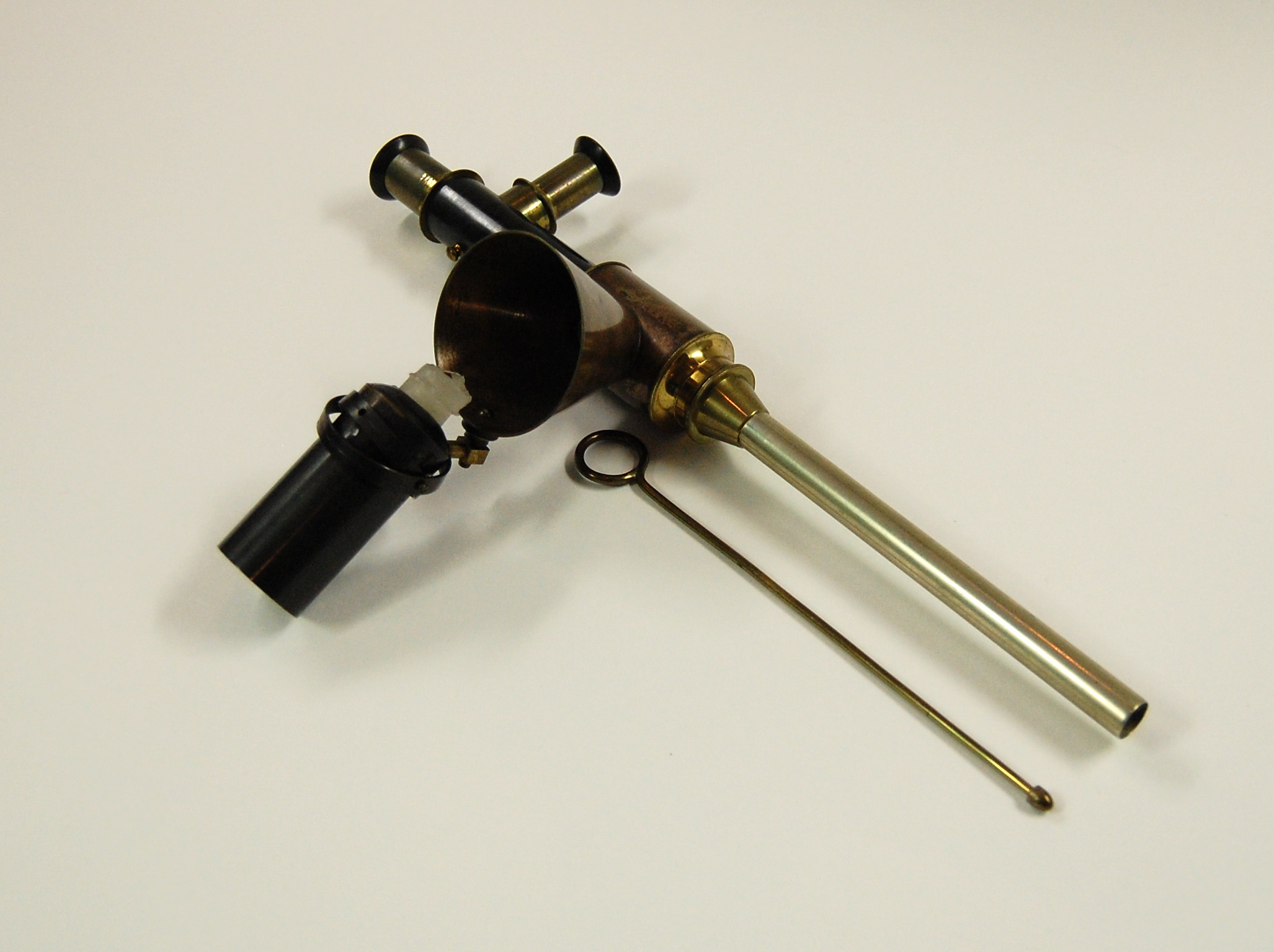
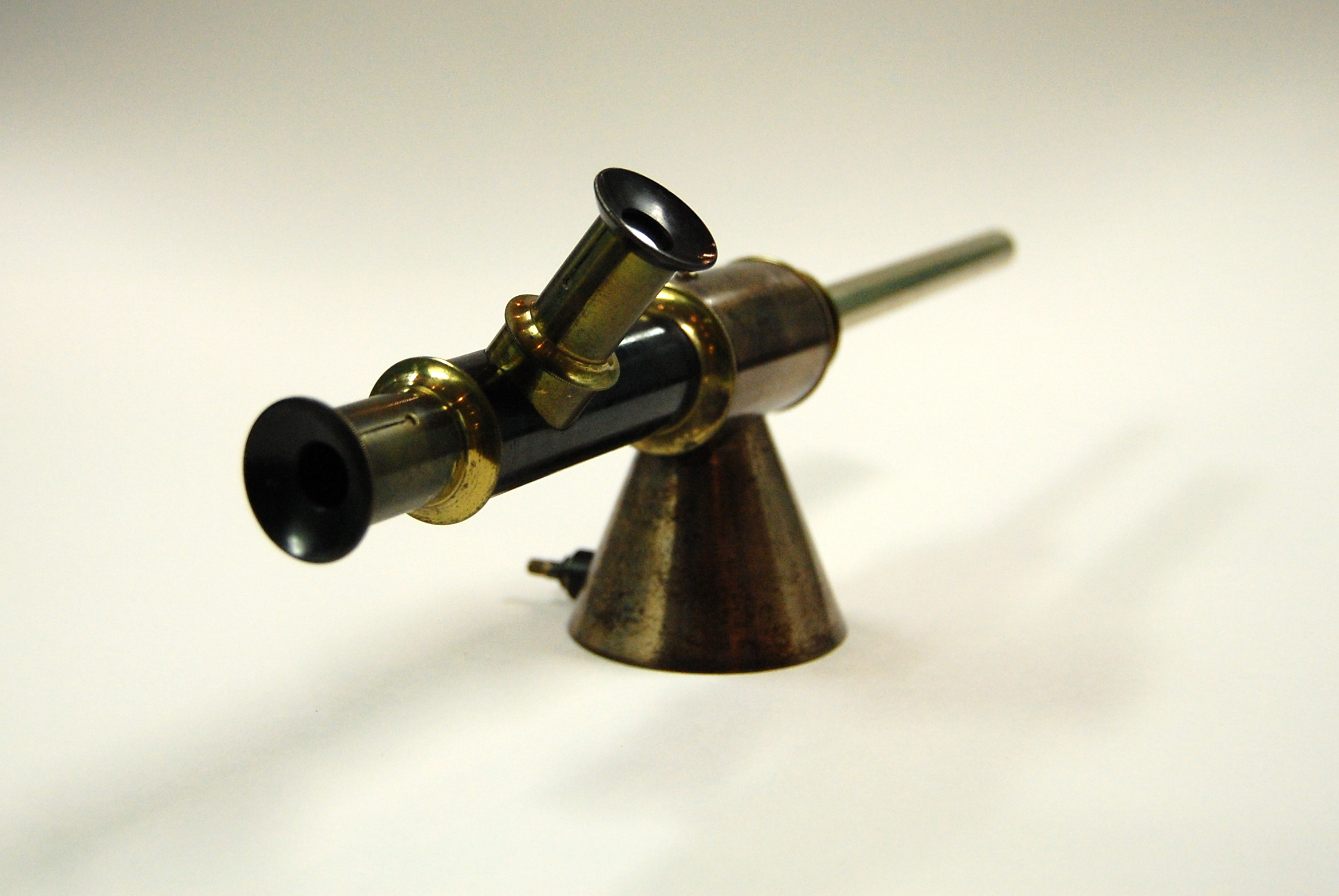
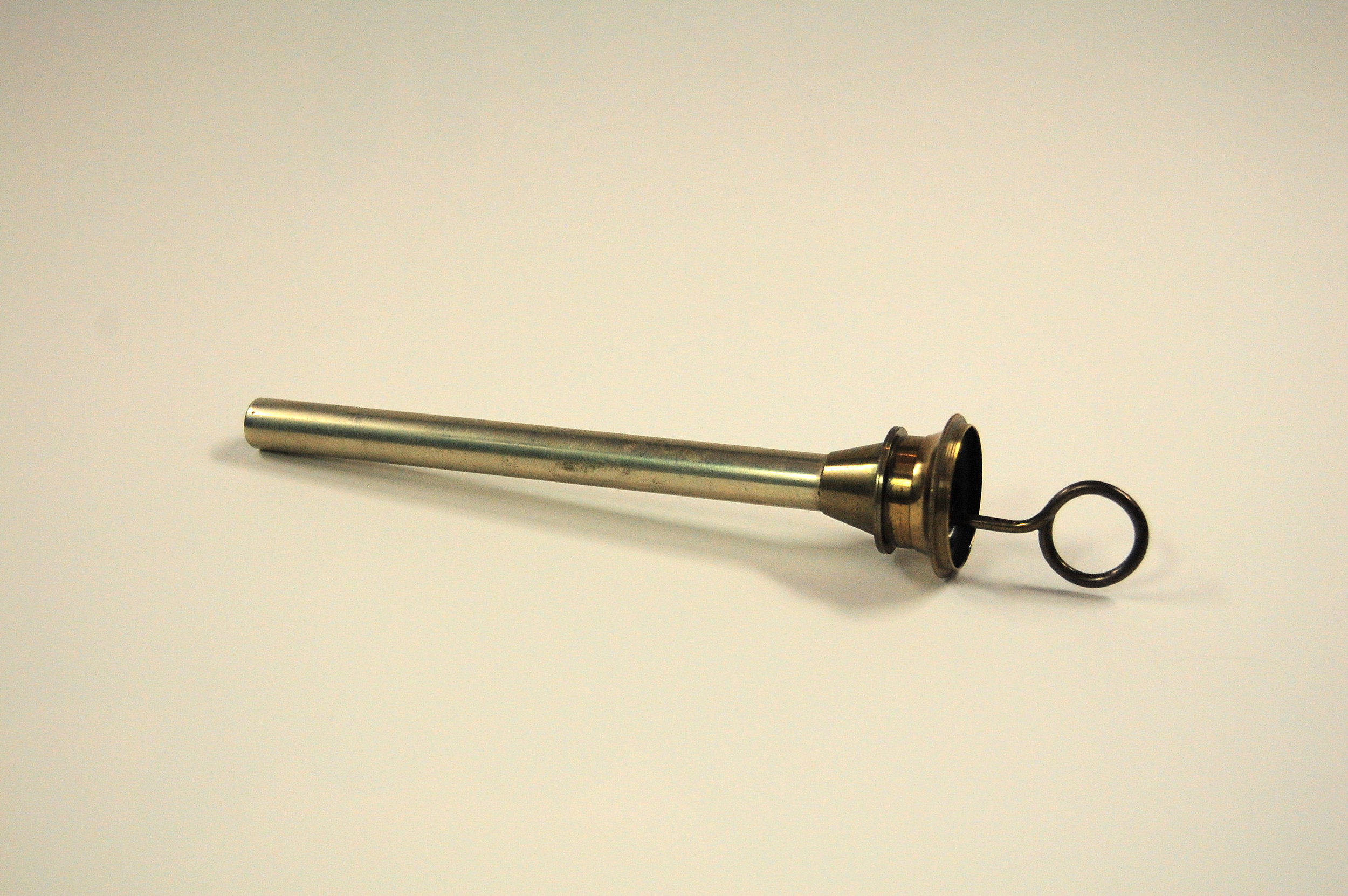
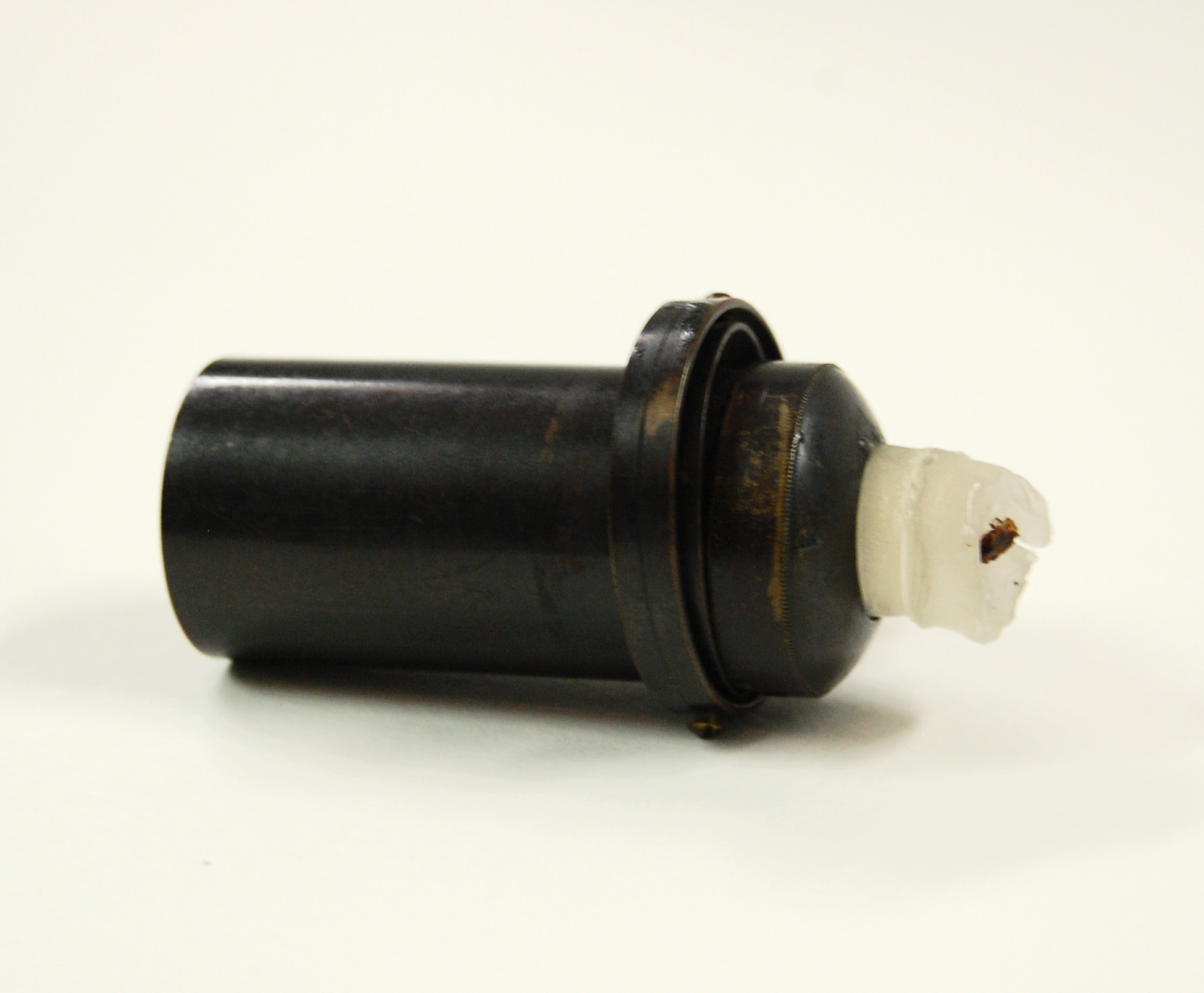
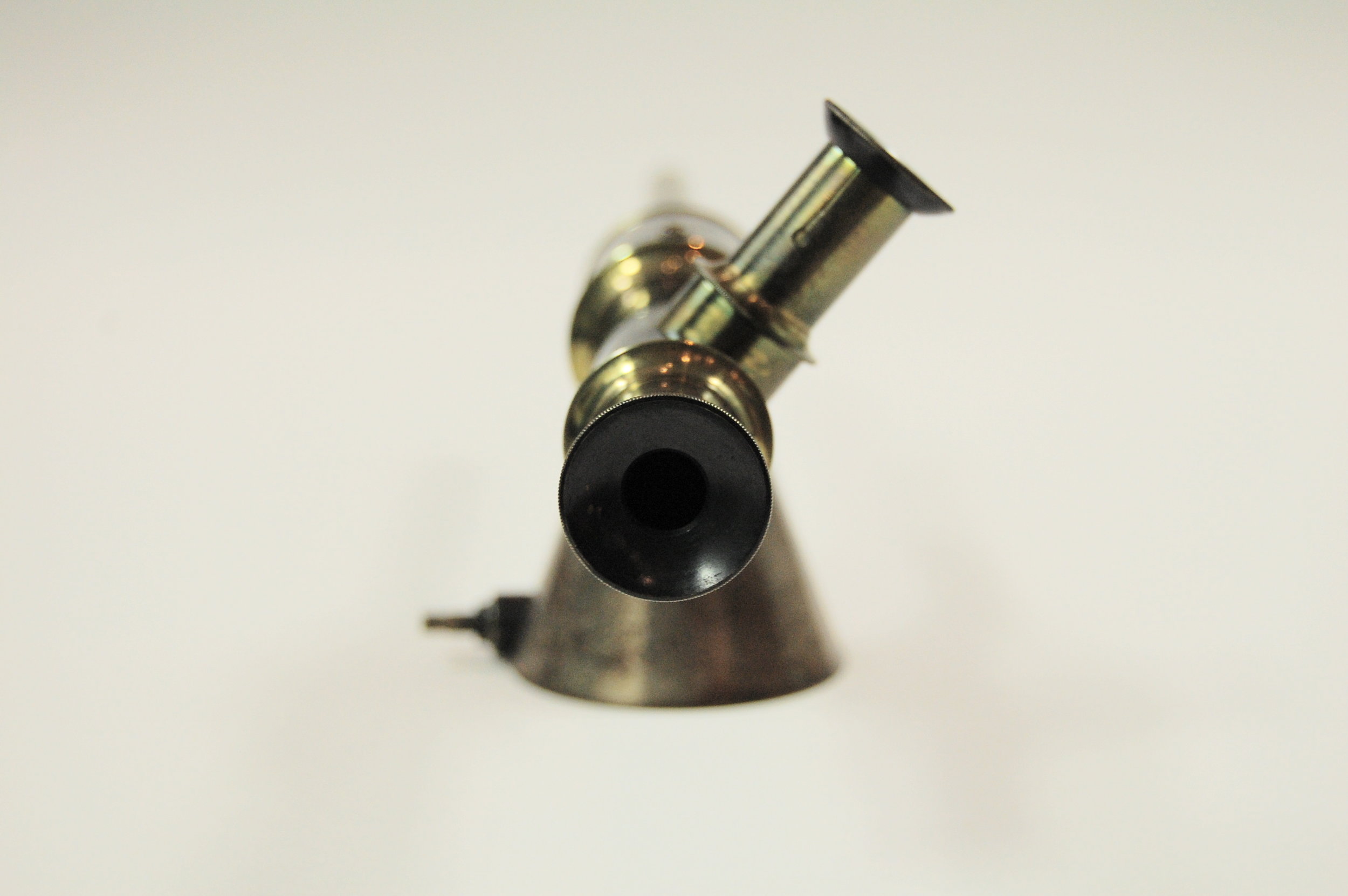
Endoscopy is the practice of looking inside the human body. To be able to directly see into the human body is a crucial aspect of medicine as it enables illnesses and their symptoms to be identified in a less invasive way than surgery.
In 1806 Philip Bozzini, a German physician made an attempt to view inside the urinary tract using a tin tube and a candle. He called it a ‘lichtleiter’ which translates to ‘light conductor’. His early scope functioned similar to the one pictured
In order to achieve illumination and therefore visibility, a candle was lit and held in the conically shaped area protruding off the examining tube. A mirror is attached to the short arm protruding upwards from the main examining tube. This mirror reflects the light from the candle back down inside the tube and illuminates the tube. Using this method the physician gained internal views of the patient.
Endoscopes like this one were and still are used in the initial diagnosis stages to identify symptoms of illness and inform treatment. Instruments such as this saved, money, spared people extremely and often fatal surgical operations. Nowadays endoscopes are lit electronically and include long rods with cameras attached to the end to even further inside the human body with greater accuracy.
This object is on display in the Endoscopy display case at the George Marshall Medical Museum.